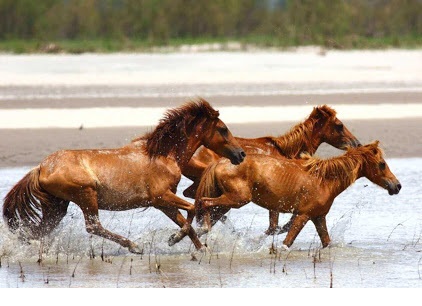The Dibru-Saikhowa National Park represents a remarkable ecosystem nestled in the northeastern landscapes of India, embodying a complex tapestry of conservation and natural wonder. Situated across the Tinsukia and Dibrugarh districts of Assam, this extraordinary protected area has emerged as a critical sanctuary for diverse wildlife and ecological preservation.
Established through a series of progressive conservation efforts, the park's journey began in 1890 with its initial designation as a Reserve Forest. Over subsequent decades, strategic additions and careful management transformed this landscape into a comprehensive wildlife sanctuary, ultimately achieving national park status in 1999. This gradual evolution reflects a thoughtful approach to environmental protection and sustainable land management.
The park's ecological significance is profoundly demonstrated through its remarkable biodiversity. Home to rare and endangered species like the white-winged wood duck, Bengal tiger, and Indian leopard, the ecosystem represents a microcosm of northeastern India's rich natural heritage. The unique presence of feral horses, descendants of domesticated animals left behind during World War II, adds an intriguing narrative to the park's living landscape.
Geographically, Dibru-Saikhowa is distinguished by its diverse terrain, featuring semi-evergreen and deciduous forests, expansive grasslands, and distinctive canebrakes. The confluence of multiple rivers creates fertile floodplains that support an intricate web of flora and fauna. This dynamic environment has been recognized internationally, with the park's designation as a Biosphere Reserve in 1997 underscoring its global ecological importance.
The park's conservation narrative extends beyond wildlife protection, encompassing broader environmental and socio-economic dimensions. Local and state governments have strategically positioned the area as a hub for eco-tourism, creating sustainable opportunities that balance human interaction with ecological preservation. This approach has been particularly evident in infrastructure development, such as eco-lodges that minimize environmental impact while providing immersive visitor experiences.
Notably, the park has been at the forefront of critical environmental debates. A significant moment occurred in December 2020 when the Gauhati High Court intervened to halt hydrocarbon exploration within the protected area, demonstrating the ongoing commitment to preserving this critical ecosystem. Such legal interventions highlight the complex negotiations between development pressures and conservation imperatives.
The cultural and ornithological significance of Dibru-Saikhowa cannot be overstated. Recognized as an Important Bird Area (IBA), the park hosts remarkable avian species like the Bengal Florican and Himalayan Griffon. These feathered inhabitants contribute to the park's reputation as a crucial biodiversity hotspot, attracting researchers, wildlife enthusiasts, and conservationists from around the world.
As a living testament to India's natural inheritance, Dibru-Saikhowa National Park continues to inspire and educate. Its story is not merely about protecting a geographical space but about maintaining a delicate ecological balance, preserving cultural narratives, and offering a window into the magnificent complexity of northeastern India's natural world.





